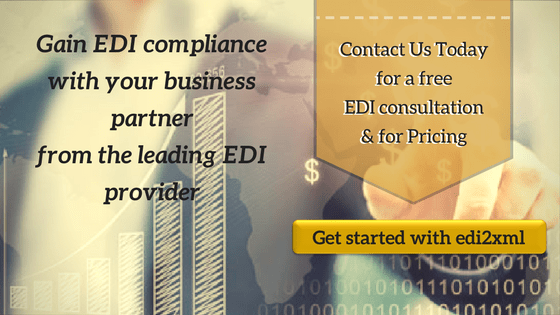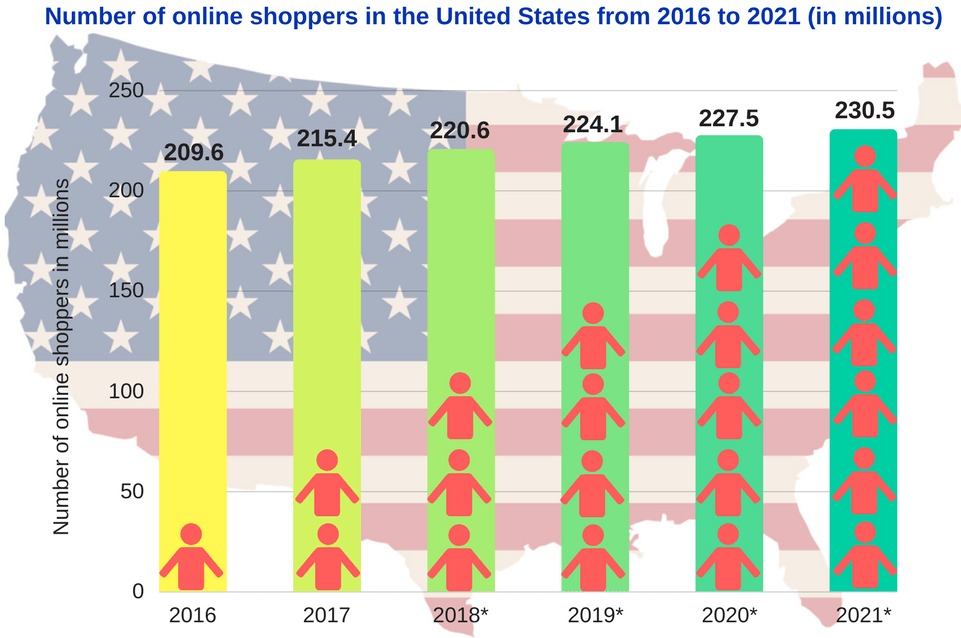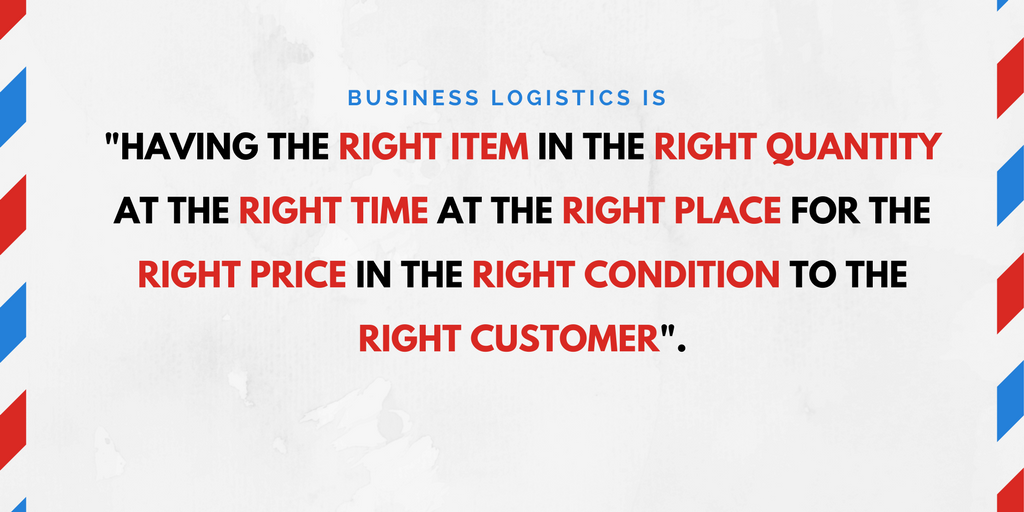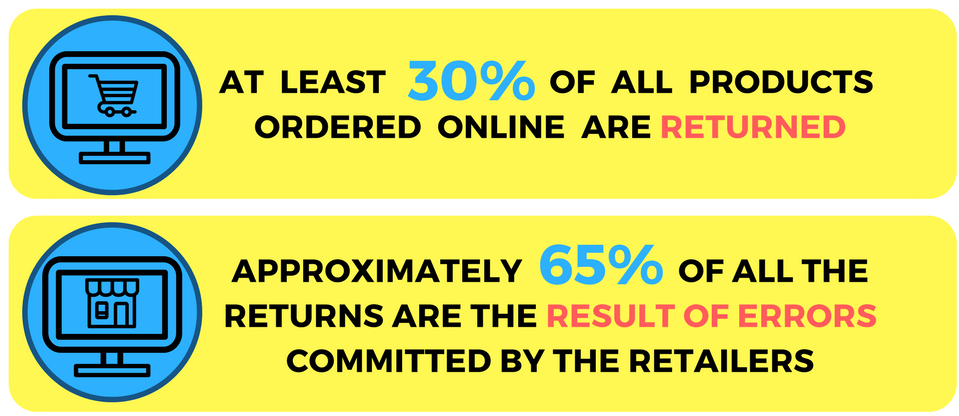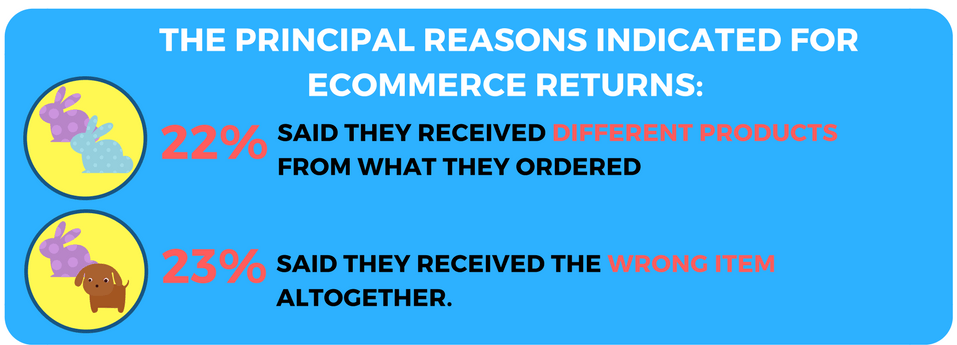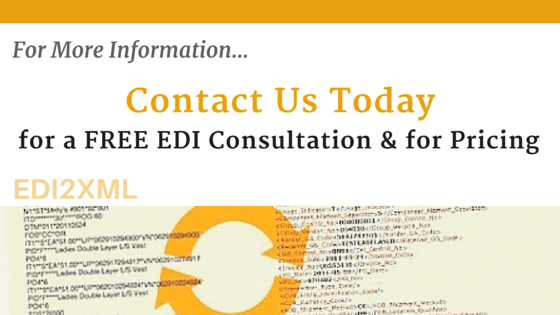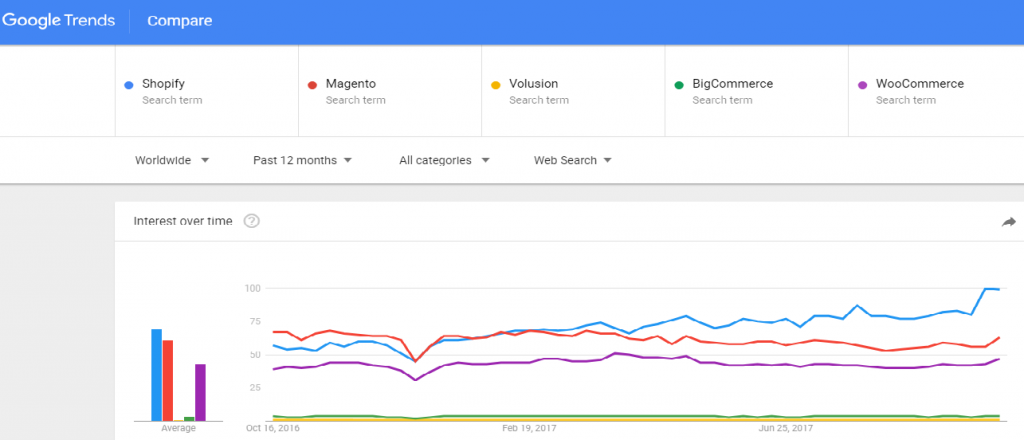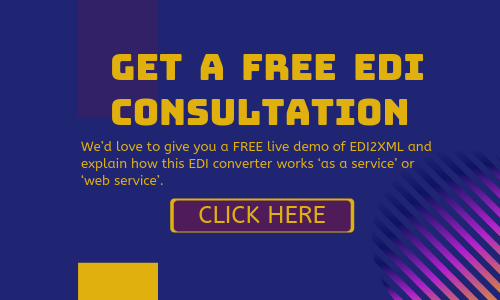This post was updated to reflect current trends and information.
In the world of business-to-business (B2B) transactions, efficiency is paramount. The EDI 810 Invoice stands as a crucial electronic document that streamlines the billing process, ensuring accurate and timely payments. But what exactly is an EDI 810 invoice, and how does it revolutionize the way companies handle financial exchanges? This comprehensive article delves into the intricacies of the EDI 810 standard, exploring its key components, workflow, benefits, and implementation strategies. We’ll answer the common questions businesses have, such as how to interpret an EDI 810 sample, what are the mandatory data elements, and how to integrate EDI 810 into existing systems.
What is EDI 810?
EDI 810 Invoice – in international business practices, the 810 (Invoice) is an electronic document sent by the seller to the buyer to receive payment for goods or services provided.
The EDI X12 810 Transaction Set contains information about the goods and /or services, their quantity, and the price at which they were delivered to the buyer, the characteristics of the goods (color, weight, etc.), delivery terms and information about the sender and the recipient.
An electronic invoice can be generated in various standards, it all depends on which standard the partners agreed to use in order to exchange EDI. For example, in ANSI ASC X12, which is prevailing in North America, this document is called ANSI X12 Transaction Set 810 Invoice. You can also see various names for this document, for example, X12 810, EDI Invoice, EDI Invoice 810, ANSI X12 810, EDI X12 810, EDI 810, EDI 810 Document, 810 Transaction Set, etc.

“INVOIC” is an analog of the EDI 810 Invoice in the international UN / EDIFACT standard, which ispredominant outside of North America. INVOIC document (derived from the word “Invoice”, but limited to 6 letters, according to the EDIFACT rule).
EDI 810 Invoice Data Elements: What Information is Included?
Understanding the key data elements within an EDI 810 Invoice is essential for accurate processing. What specific information does an EDI 810 contain, and how is it structured? Typically, an EDI 810 document includes:
- Invoice Number and Date: Unique identifiers for tracking and referencing invoices.
- Purchase Order Number: Linking the invoice to the original purchase order for reconciliation.
- Delivery Date: The date goods or services were provided.
- List of Items or Services: Detailed description of products or services rendered.
- Item Price and Identifier: Pricing details and unique product/service codes.
- Payment Terms: Agreed-upon payment conditions, including due dates and discounts.
- Shipping Information: Addresses, carrier details, and tracking numbers.
- Tax and Discount Calculations: Detailed breakdown of applicable taxes and discounts.
How do these elements ensure accuracy and efficiency in billing? Each element plays a crucial role in providing a clear and comprehensive record of the transaction, minimizing discrepancies and accelerating payment processing. Depending on the goods or services the company provides, additional information may also be included in the EDI 810 invoice.
EDI 810 Transmission Explained: AS2, FTP/SFTP, and Web Services
Previously, many EDI transactions (including EDI 810), were carried out through a Value Added Network (VAN). But the transmission of EDI 810 invoices has evolved significantly.
Currently, in order to provide an affordable and cost-efficient EDI exchange, most companies have switched to a point-to-point communication such as:
- AS2 (Applicability Statement 2) exchanges documents over the Internet by using digital certificates and encryption of the EDI data.
- FTP/SFTP (File Transfer Protocol/Secure File Transfer Protocol) – These file transfer protocols allow businesses to connect with their partners via the Internet in order to exchange EDI documents.
- HTTP EDI Web Service (REST API) This EDI Web Service gains more and more popularity because is much more cost-effective and you can be up and running in less than an hour. EDI web Service meant for companies who got their technical resources to work with REST API (call and consume HTTP Rest Web services). The EDI2XML offers a free 15 days trial.
Which transmission method is best for your business, and what factors should you consider when choosing? The choice depends on factors like security requirements, technical capabilities, and cost considerations. For example, REST APIs are often preferred for their speed and ease of integration, while AS2 provides robust security for sensitive data.
Learn more about EDI Web Service
One company can use different means or protocols to exchange EDI documents with its multiple trading Partners. (see picture below) Usually, this happens because each big company has its own requirements to exchange electronic messages or EDI.
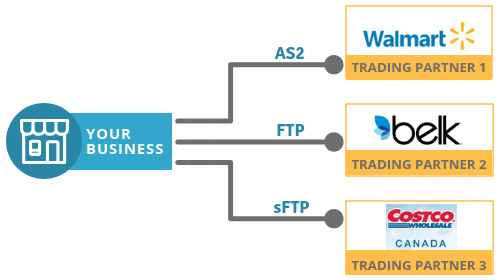
A Detailed Look at the EDI 810 Transaction Process
In typical and common business practice, the basic documents exchanged between trading partners are EDI 850 (Purchase Order) and EDI 810 (Invoice); this statement is partially true in the EDI world. Based on our more than 25 years of successful EDI Integration experience, we can tell you for sure that usually, the EDI process is much more complex. Between EDI 850 Purchase Order (or even before it) and Invoice 810, partners exchange a number of different documents. This is especially true for retail companies.
Below you can find a possible EDI scenario in the retail industry.
Seller sends to the buyer an EDI 846 Inventory Inquiry message to advise about stock level status and availability. EDI846 can include also pricing information.
Thus, The EDI 810 invoice is often part of a larger EDI workflow. What is the typical sequence of EDI transactions in a B2B exchange, and how does the EDI 810 fit into this process? A common scenario involves:
- EDI 846 (Inventory Inquiry/Advice): Primarily used by suppliers to provide real-time inventory data to their trading partners
- EDI 850 (Purchase Order): The buyer initiates the order.
- EDI 855 (Purchase Order Acknowledgement): The seller confirms the order.
- EDI 860 (Purchase Order Change Request – Buyer Initiated): allows a buyer to request modifications to an existing purchase order they’ve already sent to a supplier
- EDI 865 (Purchase Order Change Acknowledgment/Request – Seller Initiated): transaction set used to confirm or request changes to a previously submitted purchase order.
- EDI 856 (Advance Ship Notice): The seller provides shipping details.
- EDI 810 (Invoice): The seller requests payment.
NOTE: EDI 846 is more often used in B2B e-commerce for more information about this transaction set please read the blog: What is EDI 846 document?
Based on the information received in EDI 846 the buyer generates a Purchase Order (EDI 850) which contains a list of goods that he wants to purchase from the supplier, including information about the quantities, shipping directives, and other details.
Upon receiving the Purchase Order seller send a Purchase Order Acknowledgement (EDI 855) to confirm goods are available to be sold.
In the next step, the buyer could send a seller a Purchase Order Change Request (EDI 860) to request a change to a previously submitted purchase order.
The seller responds with a Purchase Order Change Request/Acknowledgement (EDI 865) to notify of the acceptance or rejection of the change to the purchase order previously submitted by the buyer.
To send the contents of the shipment, the seller sends an EDI 856 Advance Ship Notice or EDI ASN. This EDI document must be transmitted before the arrival of the goods.
An invoice (EDI 810) can be transferred to the buyer after filling out and delivering the order or along with.
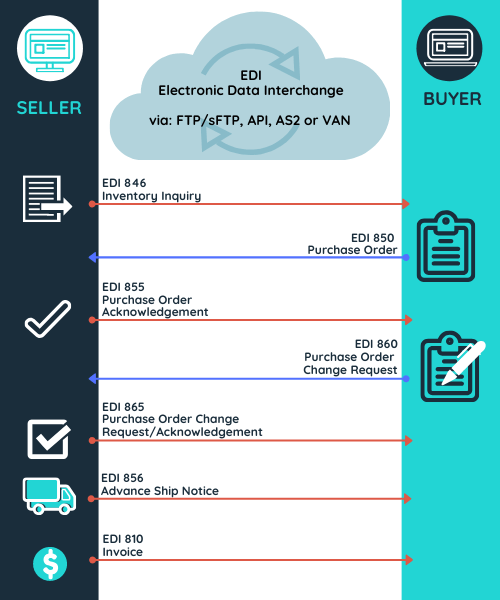
Thus, you can notice, despite EDI X12 810 invoice is the most commonly exchanged electronic document, there are multiples EDI transactions sets supporting EDI 810.
Book a FREE one-on-one EDI consultation session with our in-house experts
EDI X12 810 Invoice Sample
The following example details the format of an EDI 810 invoice.
ISA*00* *00* *12*5141231234 *12*5034564567
*181122*1220*U*00501*000000001*0*T*> GS*IN*5141231234*504564567*20181122*122047*1*X*005010
ST*810*0001
BIG*20181122*I-0042537
N1*RI**92*10055500
N1*ST**92*00262
ITD*05*1*****100
DTM*011*20190120
IT1**2*EA*5.45**UP*888077648572
SDQ*EA*92*00682*1*70674*1
IT1**2*EA*5.45**UP*888077650123
SDQ*EA*92*00111*1*11356*1
IT1**3*EA*4.85**UP*888077648954
SDQ*EA*92*00682*1*11356*1*70674*1
IT1**3*EA*5.15**UP*888077649105
SDQ*EA*92*00011*2*00111*1
IT1**1*EA*5.9**UP*888077648867
SDQ*EA*92*00682*1
TDS*5770
CAD*A***FDEG
CTT*5
SE*20*0001
GE*1*1
IEA*1*000000001
Invoice EDI 810 Invoice Specifications: Decoding the Segment Structure
Here is the specification of the EDI 810 transaction set given as an example above. You should note that like any other EDI document, 810 contains mandatory and optional data. Optional data depends of the business areas and the requirements of the trading partner.
| Segment name | Purpose | |
| ISA | Interchange Control Header | Marks the beginning of the transmission and provides the sender/receiver identification. |
| GS | Functional Group Header | Marks the beginning of the functional group and provides the sender/receiver identification. |
| ST | Transaction Set Header | To indicate the start of a transaction set and to assign a control number. There must be only one instance per transaction. |
| BIG | Beginning Segment for Invoice | To indicate the beginning of an invoice transaction set and transmit identifying numbers and dates. |
| N1 | Name | To identify a party by type of organization, name, and code ST- Ship To RI – Remit To The N1 is sent in conjunction with the SDQ when the N1 indicates the ship to location and the SDQ indicates the bill to locations. |
| ITD | Terms of Sale/Deferred Terms of Sale | To indicate a discount terms. Code 05 – Discount Not Applicable |
| DTM | Date/Time Reference | To specify pertinent dates and times Code 011 Shipped |
| IT1 | Baseline Item Data | To specify the basic and most frequently used line item data for the invoice and related transactions |
| SDQ | Destination Quantity | To specify multiple locations and quantity detail. |
| TDS | Total Monetary Value Summary | To provide the total invoice amount |
| CAD | Carrier Detail | To specify transportation details for the transaction Code: FDEG – FedEx (Ground Only) |
| CTT | Transaction Totals Number of line items | To transmit hash totals for a specific element in the transaction set. 5 – Total number of IT1 Items segments. |
| SE | Transaction Set Trailer | To indicate the end of the transaction set and provide the count of the transmitted segments (including the beginning (ST) and ending (SE) segment). |
| GE | Functional GroupTrailer | Marks the ending of the functional group and provides the sender/ receiver identification |
| IEA | Interchange Control Trailer | To define the end of an interchange of zero or more functional groups and interchange-related control segments |
To learn more about the structure of ANSI ASC X12 read our Blogs:
What are the Benefits of Using EDI 810 Invoices?
Like any EDI document, the EDI 810 provides faster communication between seller and buyer and reduces the risk of errors. Using EDI is much easier than traditional paper documents.
Thanks to EDI, the exchange of documents between trading partners is error-free.
Major benefits of EDI:
- Reduce paper flow and increase business efficiency by reducing the time it takes for both parties to complete transactions.
- Reduce administrative time spent manually submitting invoices and other essential documents.
- Resolve manual data entry errors
- Customer satisfaction is growing due to the rapid completion and delivery of your orders.
- Faster payment from your customers
EDI 810 Integration Options: Managed Services vs. Web Service, Which is right for you?
EDI2XML propose 2 options for EDI 810 transaction exchange with your business partners:
Option 1: Fully Managed EDI Service including translation and communication service offering to businesses of all sizes, from various industries. All processing of EDI files are done at our end, leaving customers with no on-site installation of software or hardware and an EDI project that is on time and within budget.
Option 2: EDI2XML web services is an HTTP service running over the internet, on EDI2XML own platform that is capable of receiving HTTP requests to translate EDI messages to XML, and XML messages (based on EDI2XML’s proprietary format) to EDI.
Contact us today for more information about EDI Integration and we will more than happy to assist you!

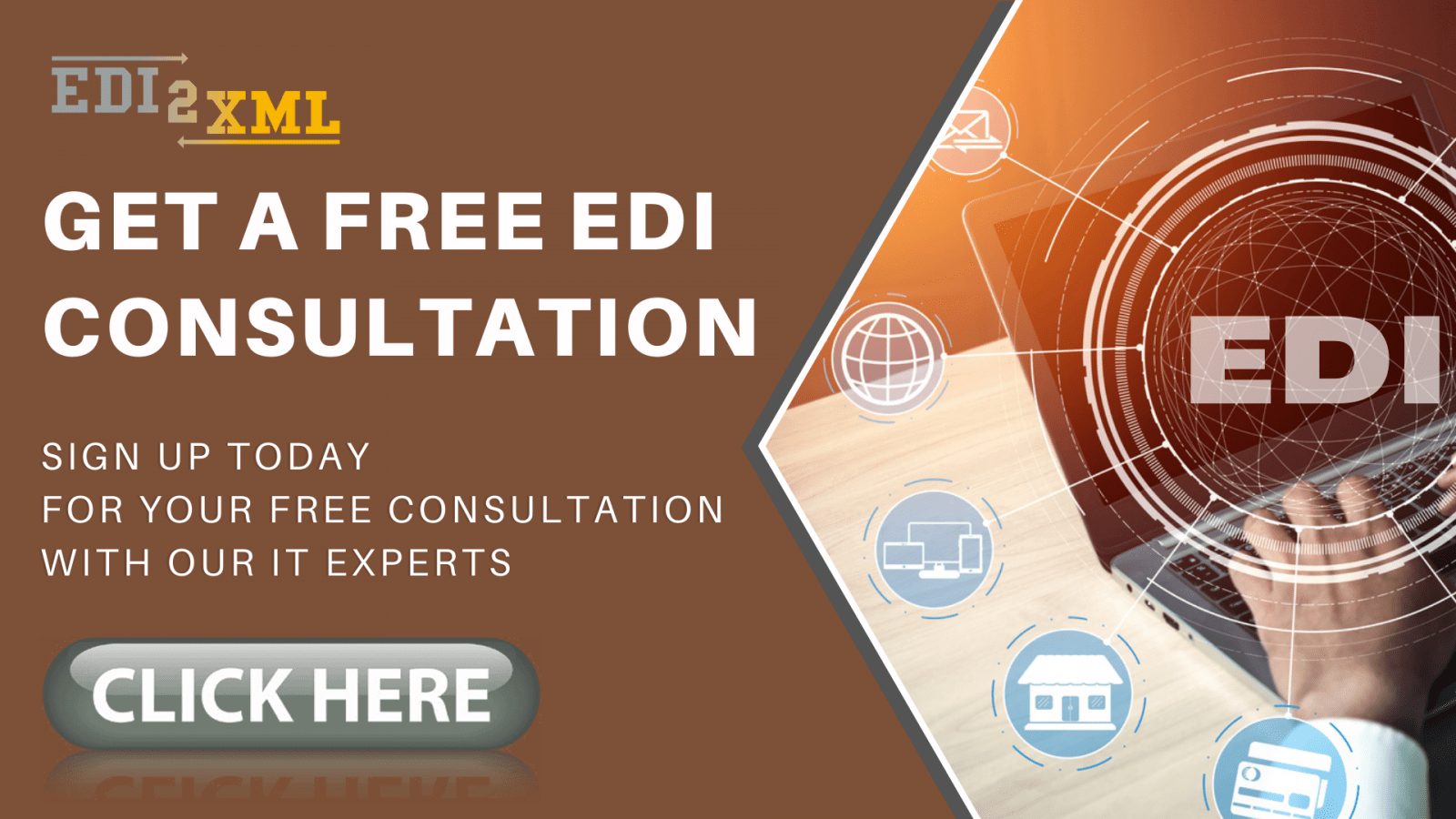
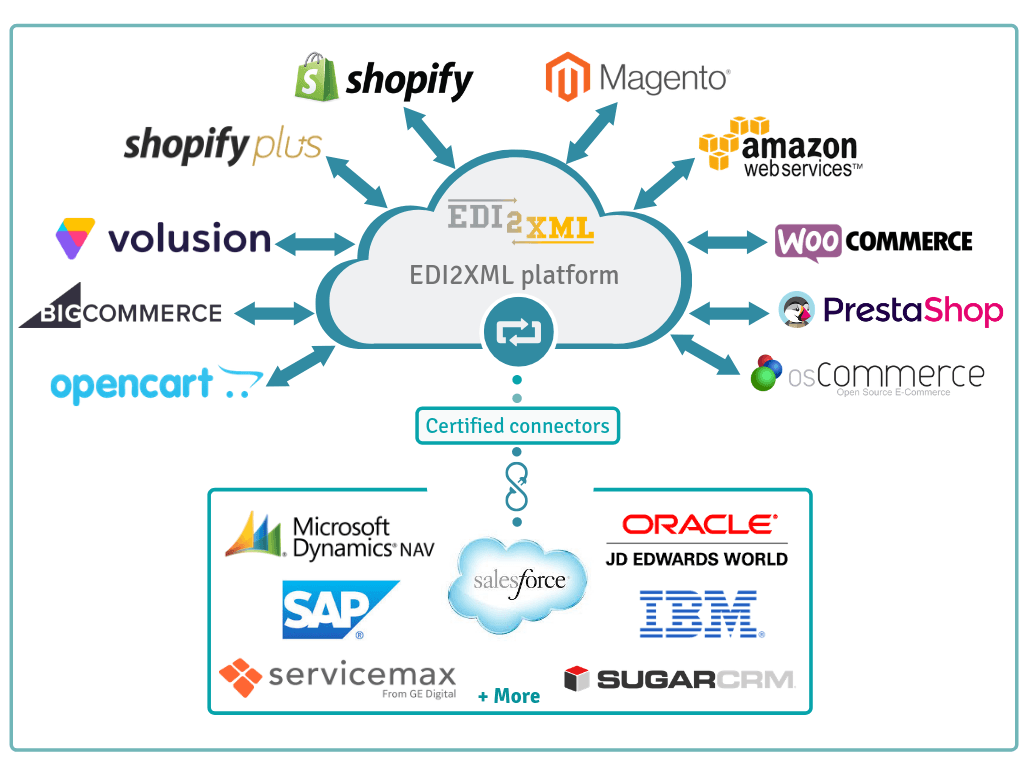
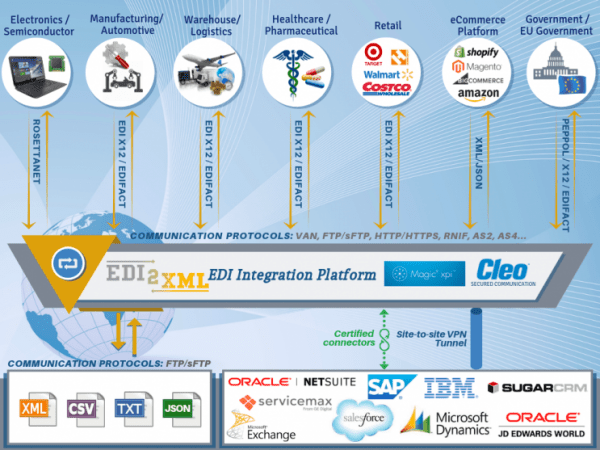
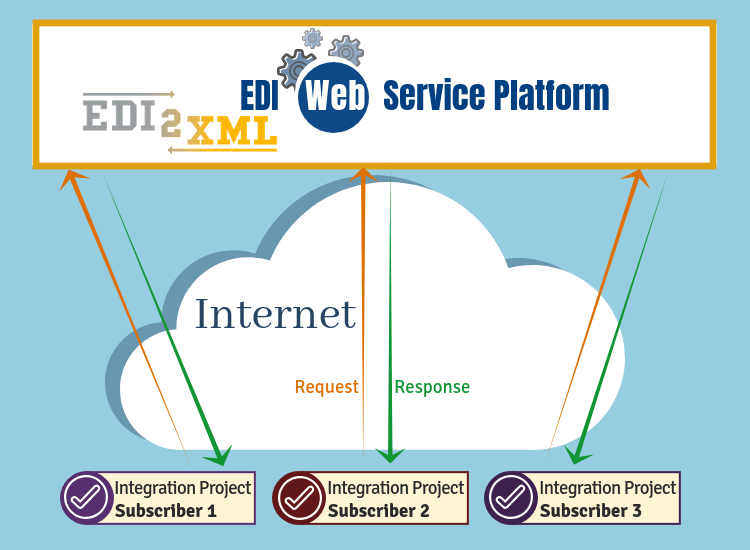

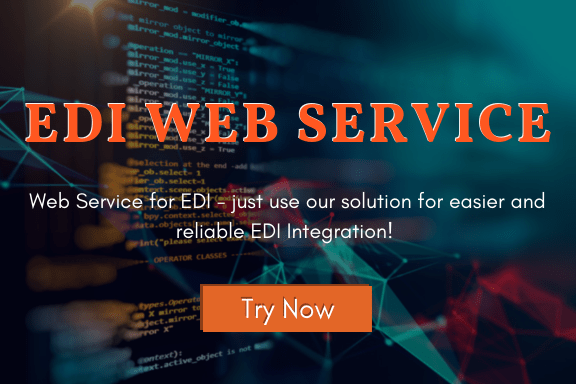
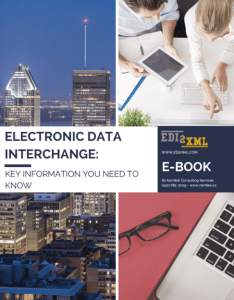

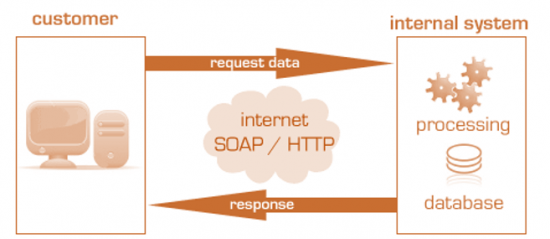
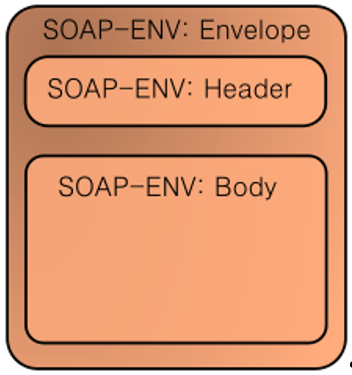

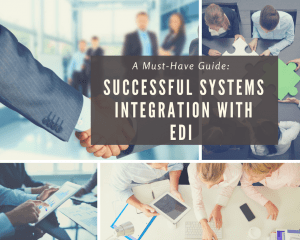 In fact, large chains are extremely important customers for many small and medium size enterprises. It is therefore essential, even vital, for many of them to follow the requirements imposed by those major retailers. Actually, all the large chains use mainly EDI format to exchange business transactions with their partners.
In fact, large chains are extremely important customers for many small and medium size enterprises. It is therefore essential, even vital, for many of them to follow the requirements imposed by those major retailers. Actually, all the large chains use mainly EDI format to exchange business transactions with their partners.